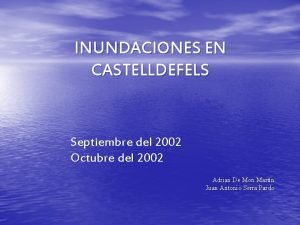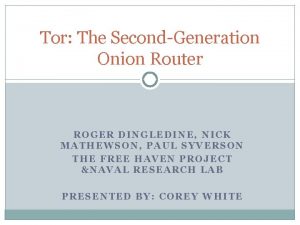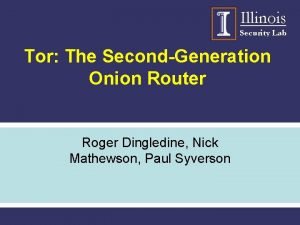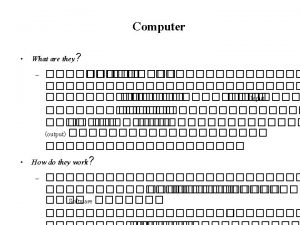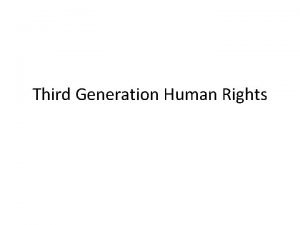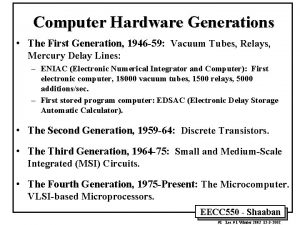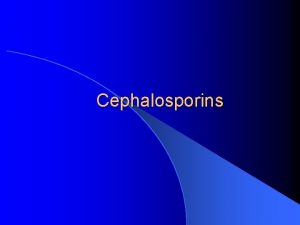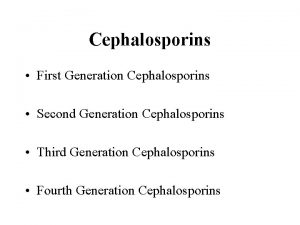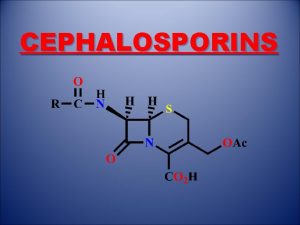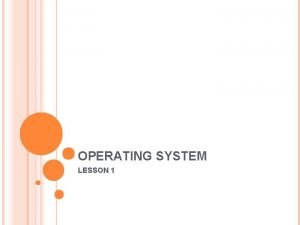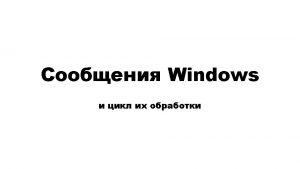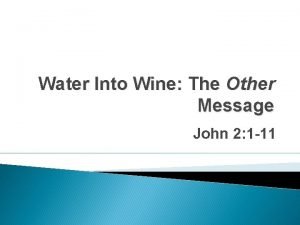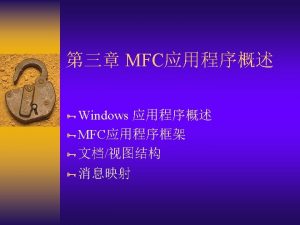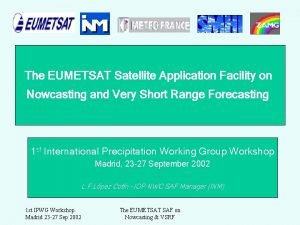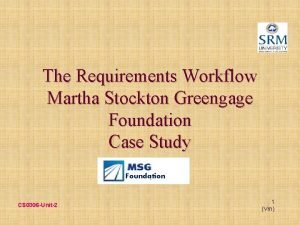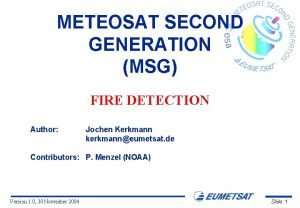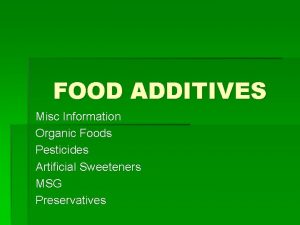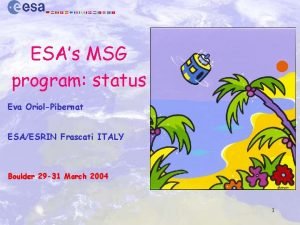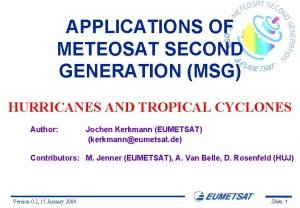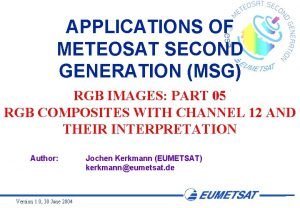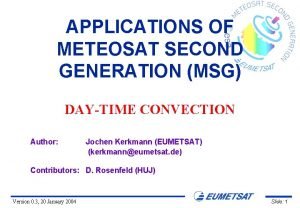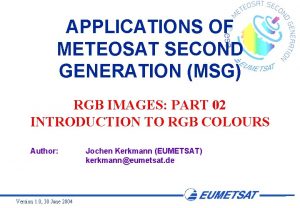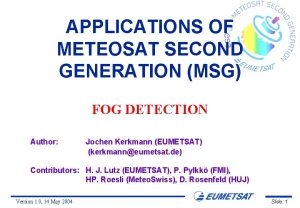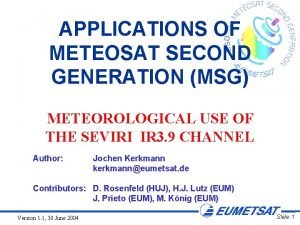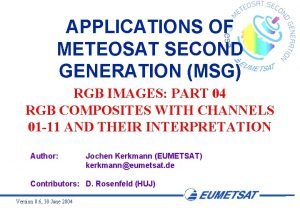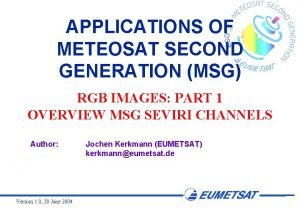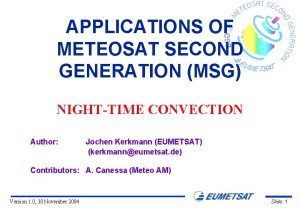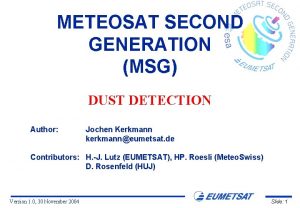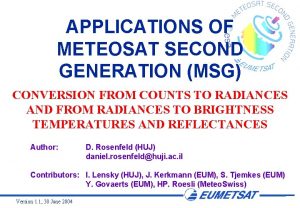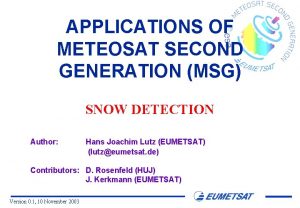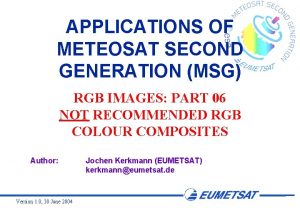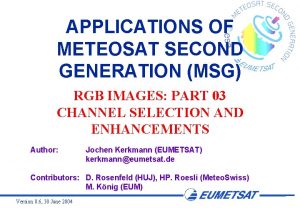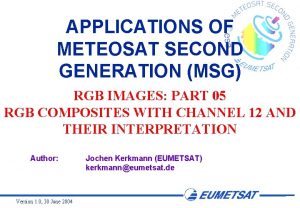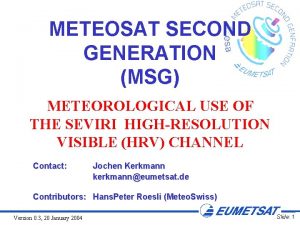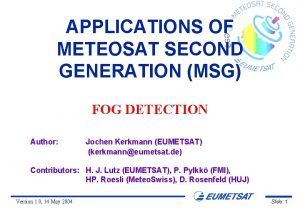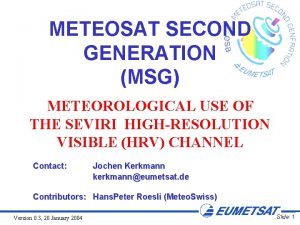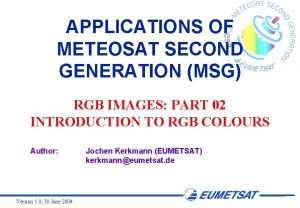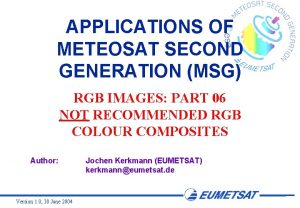METEOSAT SECOND GENERATION MSG FROM FIRST TO SECOND



















































- Slides: 51

METEOSAT SECOND GENERATION (MSG) FROM FIRST TO SECOND GENERATION METEOSAT (from MFG to MSG) Author: Volker Gärtner (EUMETSAT) (gaertner@eumetsat. de) Contributors: M. König (EUMETSAT), J. Kerkmann (EUMETSAT) D. Rosenfeld (HUJ), V. Zwatz-Meise (ZAMG), H. -P. Roesli (Meteo. Swiss) Version 0. 2, 27 January 2004 Slide 1

METEOSAT-1 to 7 Meteosat First Generation (MFG) ØVis & IR Imager Ø 3 Spectral Channels ØImages every 30 Minutes Ø 5 km horizontal ‘Sampling Distance’ ØVIS-Channel 2. 5 km Version 0. 2, 27 January 2004 Slide 2

Channels of First Generation METEOSAT Version 0. 2, 27 January 2004 Slide 3

VIS, IR & WV channels of Meteosat First Generation Version 0. 2, 27 January 2004 Slide 4

Comparison: MSG - Present Meteosat Version 0. 2, 27 January 2004 Slide 5

Comparison: Time Stamping of MFG and MSG Image Data Ø Unlike MFG, the MSG system allows for full flexibility in the start and end time of the scanning period Ø One other important difference to note is that the start of data dissemination to end users commences before the completion of the full repeat cycle Ø The time given in the header of each MSG image file is always the start of the repeat cycle (e. g. data given the time 12. 00 UTC corresponds to the data acquired during the repeat cycle of 12. 00 UTC to 12. 15 UTC) Ø The time given in the header of each MFG image file is always the end of the repeat cycle (e. g. data given the time 12. 00 UTC corresponds to the data acquired during the repeat cycle of 11. 30 UTC to 12. 00 UTC) Ø However, to maintain continuity in the meteorological data archive, the MFG and MSG archive data (data older than 24 -hours) is ordered using the time period corresponding to the end of the data acquisition period Version 0. 2, 27 January 2004 Slide 6

Comparison: Time Stamping of MFG and MSG Image Data Differences in the time stamping between first and second generation Meteosat satellite data Version 0. 2, 27 January 2004 Slide 7

MSG-1 LAUNCH ON 28 -AUG-2002 Version 0. 2, 27 January 2004 Slide 8

Meteosat Second Generation (MSG) Ø Spinning Enhanced Vis & IR Imager Ø 12 Spectral Channels Ø Images every 15 Minutes Ø 3 km horizontal ‘sampling distance’ at Sub-Satellite Point (SSP) Ø Hi-Res VIS-Channel 1 km sampling distance (SSP) Version 0. 2, 27 January 2004 Slide 9

MSG SEVIRI CHANNELS Basic + Airmass + Hi Res Vis Missions Version 0. 2, 27 January 2004 Slide 10

SEVIRI IR Channels Version 0. 2, 27 January 2004 Slide 11

Contribution Functions Version 0. 2, 27 January 2004 Slide 12

MSG: IMPROVED SPATIAL SAMPLING (Example: 13 October 2003, 12: 15 UTC) MFG IR Channel 5 km Version 0. 2, 27 January 2004 MSG IR 10. 8 Channel 3 km Slide 13

MFG IR Channel ~ 5 km MFG VIS Channel ~ 2. 5 km MSG: IMPROVED SPATIAL SAMPLING (Example: 4 December 2002, 12: 30 UTC) MSG HRV channel ~ 1 km Version 0. 2, 27 January 2004 Slide 14

MSG: IMPROVED SPATIAL SAMPLING (Example: 11 November 2003, 11: 00 UTC) MFG VIS Channel 2. 5 km Version 0. 2, 27 January 2004 MSG HRVIS Channel 1 km Slide 15

MSG: IMPROVED SPATIAL SAMPLING (Example: 5 November 2003) Kaiserstuhl (557 m) MFG VIS Channel 2. 5 km 08: 00 UTC Version 0. 2, 27 January 2004 MSG HRVIS Channel 1 km 08: 45 UTC Slide 16

MSG: IMPROVED SPATIAL SAMPLING (Example: 8 December 2003, 11: 45 UTC) MFG VIS Channel 2. 5 km Version 0. 2, 27 January 2004 MSG HRVIS Channel 1 km Slide 17

IMPROVED SPATIAL SAMPLING - MSG-1 HRVIS vs NOAA-16 AVHRR CH 2 (Example: 19 November 2003) MSG HRVIS Channel, 13: 00 UTC Version 0. 2, 27 January 2004 AVHRR Channel 2, 13: 02 UTC Slide 18

MSG: IMPROVED TIME SAMPLING (Example: 8 June 2003) 10: 00 10: 30 MFG VIS, 30 min sampling 10: 00 10: 15 10: 30 10: 45 MSG HRVIS, 15 min sampling Version 0. 2, 27 January 2004 11: 00 Slide 19

MSG: IMPROVED SPATIAL AND TIME SAMPLING (Example: 10 December 2003 - MSG Rapid Scans) MFG VIS Channel 2. 5 km/30 min MSG HRVIS Channel 1 km/5 min Click on the image to see the animation ! Version 0. 2, 27 January 2004 Slide 20

MSG: IMPROVED SPECTRAL SAMPLING (Example: 20 May 2003, 12: 00 UTC) Severe Convection MFG IR Channel Version 0. 2, 27 January 2004 MSG RGB Composite (R=01, G=03, B=04 i) Slide 21

MSG: IMPROVED SPECTRAL SAMPLING (Example: 8 June 2003, 12: 00 UTC) Tornadic Storms MFG IR Channel Version 0. 2, 27 January 2004 MSG-1 RGB Composite (R=01, G=03, B=09) Slide 22

MSG: IMPROVED SPECTRAL SAMPLING (Example: 3 August 2003, 12: 00 UTC) Smoke from fores fires MFG VIS Channel Version 0. 2, 27 January 2004 MSG RGB Composite (R=03, G=02, B=01) Slide 23

MSG: IMPROVED SPECTRAL SAMPLING (Example: 9 September 2003, 12: 00 UTC) Hurricane Isabel MFG IR Channel Version 0. 2, 27 January 2004 MSG RGB Composite (R=05 -06, G=04 -09, B=03 -01) Slide 24

MSG: IMPROVED SPECTRAL SAMPLING (Example: 11 November 2003, 03: 00 UTC) Fog/Low Stratus (night) MSG IR 10. 8 Channel Version 0. 2, 27 January 2004 MSG RGB Composite (R=10 -09, G=09 -04, B=09) Slide 25

MSG: IMPROVED SPECTRAL SAMPLING (Example: 26 September 2003, 08: 00 UTC) Contrails MSG IR 10. 8 Channel Version 0. 2, 27 January 2004 MSG Difference Image (IR 12. 0 - IR 10. 8) Slide 26

The Following Slides …. • … will show full disk views of each channel, providing a general overview • after that each channel and its specific application will be discussed in more detail and with more examples Version 0. 2, 27 January 2004 Slide 27

Land Surface MSG Channel VIS 0. 6 Clouds high reflectance sun glint thick clouds snow desert bare soil forest cloud detection, cloud tracking, aerosol observation, image navigation support scene identification thin clouds over land thin clouds over sea low reflectance Version 0. 2, 27 January 2004 Slide 28

Land Surface MSG Channel VIS 0. 8 Clouds high reflectance sun glint thick clouds snow desert grass etc. forest bare soil cloud detection, cloud tracking, aerosol observation, image navigation support scene identification thin clouds over land thin clouds over sea low reflectance Version 0. 2, 27 January 2004 Slide 29

Land Surface MSG Channel NIR 1. 6 Clouds high reflectance sun glint water clouds with small droplets desert grass etc. forest aerosol observation, snow/ice detection support scene identification water clouds with large droplets ice clouds with small particles bare soil snow ice clouds with large particles sea low reflectance Version 0. 2, 27 January 2004 Slide 30

Contribution Function “window” channel CO 2 absorption plus solar contribution during daytime! Version 0. 2, 27 January 2004 Slide 31

Land Surface MSG Channel IR 3. 9 Day Clouds low reflectance/ cold ice clouds snow sea cold land warm tropical areas forest hot desert night-time fog detection (SST: 297. 7) cloud phase urban heat island fire detection support scene identification 293. 0 ice clouds with small particles water clouds over sea water clouds over land fires sun glint high reflectance/ warm Version 0. 2, 27 January 2004 Slide 32

Land Surface MSG Channel IR 3. 9 Night Clouds cold high-level clouds cold surfaces warm surfaces (trop. oceans, lakes) mid-level clouds night-time fog detection 291. 7 cloud phase urban heat island fire detection suport scene identification low-level clouds fires warm Version 0. 2, 27 January 2004 Slide 33

Contribution Function no / almost no surface contribution actual weighting function depends on actual humidity profile WV 6. 2: higher in atmosphere than WV 7. 3 Version 0. 2, 27 January 2004 Slide 34

Land Surface MSG Channel WV 6. 2 Clouds cold high-level clouds high humidity in upper troposphere water vapour information wind tracking support scene identification support GII retrieval 243. 2 low humidity in upper troposphere warm Version 0. 2, 27 January 2004 Slide 35

Land Surface MSG Channel WV 7. 3 Clouds cold high-level clouds high humidity in mid troposphere mid-level clouds water vapour information wind tracking support scene identification support GII retrieval 263. 1 low humidity in mid troposphere high level warm surface warm Version 0. 2, 27 January 2004 Slide 36

Contribution Function “window” channel H 2 O absorption Version 0. 2, 27 January 2004 Slide 37

Land Surface MSG Channel IR 8. 7 Clouds cold high-level clouds cold land surface warm sea surface thin or broken cirrus clouds 291. 7 cloud phase support scene identification support GII retrieval mid-level clouds low-level clouds hot land surface warm Version 0. 2, 27 January 2004 Slide 38

Contribution Function large surface contribution, ozone absorption Version 0. 2, 27 January 2004 Slide 39

Land Surface MSG Channel IR 9. 6 Clouds cold high-level clouds cold land surface total ozone information 272. 5 tropopause monitoring warm sea surface mid-level clouds low-level clouds hot land surface warm Version 0. 2, 27 January 2004 Slide 40

Contribution Function “split window” channels large surface contribution some H 2 O absorption (higher in 12. 0) Version 0. 2, 27 January 2004 Slide 41

Land Surface MSG Channel IR 10. 8 Clouds cold high-level clouds cold land surface warm sea surface earth and cloud temperature 293. 8 low level humidity cloud tracking support scene identification support GII retrieval mid-level clouds low-level clouds hot land surface warm Version 0. 2, 27 January 2004 Slide 42

Land Surface MSG Channel IR 12. 0 Clouds cold high-level clouds cold land surface warm sea surface earth and cloud temperature 292. 6 low level humidity cloud tracking support scene identification support GII retrieval mid-level clouds low-level clouds hot land surface warm Version 0. 2, 27 January 2004 Slide 43

Contribution Function some surface contribution CO 2 absorption Version 0. 2, 27 January 2004 Slide 44

MSG Channel IR 13. 4 Land Surface Clouds cold high-level clouds cold land surface height determination of thin clouds 273. 5 support scene identification support GII retrieval warm sea surface mid-level clouds low-level clouds hot land surface warm Version 0. 2, 27 January 2004 Slide 45

MSG Channel HRVIS high reflectance sun glint very thick clouds snow desert bare soil forest small scale convection surface features aerosol observations (cloud tracking) very thin clouds over land very thin clouds over sea surface low reflectance Version 0. 2, 27 January 2004 Slide 46

VIS 0. 6 HRV Usefulness of HRV data can be best assessed by comparing to 3 km resolution data Version 0. 2, 27 January 2004 Slide 47

Summary: MSG Benefits Ø Improved Nowcasting (very short term forecasting) Ø Higher quality of the image data Ø Higher temporal and spatial resolution, and higher quality of the meteorological parameters, which are derived from the image data better forecasts Ø Higher capacity of data collection (climate monitoring, science) Ø GERB instrument for climatological studies Ø S&R package for emergencies Version 0. 2, 27 January 2004 Slide 48

Summary: Value of MSG for Nowcasting Ø Ø Ø Higher temporal sampling (15 minutes) Higher spatial sampling (3 km IR and VIS, 1 km HRVIS) Higher spectral sampling (12 channels) Higher quality of data (e. g. 10 bits digitisation) Better discrimination of surfaces/clouds (window channels) Ø More information on vetical structure of the atmosphere – Pseudo sounding and stability products – Water vapour at two levels (WV channels) – Ozone/tropopause information (IR 9. 6 channel) Version 0. 2, 27 January 2004 Slide 49

Summary: Value of MSG for NWP Ø Atmospheric Motion Vectors (AMV) – – Better tracking (15 minutes) Improved height assignment (with IR 13. 4 and WV channels) Potential for higher resolution winds Better spatial coverage near and over active weather systems more layers of AMVs (2 WV channels, Ozone channel) more information on cloudy and cloud-free areas – Automatic quality control and flags for NWP assimilation Ø Clear Sky Radiances (CSR) Version 0. 2, 27 January 2004 Slide 50

Summary: Value of MSG for Climate Monitoring Ø Improved calibration and radiometric accuracy Ø Provision of basic climate data sets Ø Dedicated Satellite Application Facility (Climate SAF) and multi-mission archive (U-MARF) Ø Potential for land applications (e. g. surface albedo) Ø Novel observations of convective phenomena (microphysics and dynamics) Version 0. 2, 27 January 2004 Slide 51
 Stahl
Stahl Meteosat castelldefels
Meteosat castelldefels We worship you hallelujah
We worship you hallelujah Roger dingledine nick mathewson
Roger dingledine nick mathewson Second generation of computer
Second generation of computer Roger dingledine nick mathewson
Roger dingledine nick mathewson Second generation of romantic poets
Second generation of romantic poets Advantages of first generation of computer
Advantages of first generation of computer Third generation computer images
Third generation computer images Second generation of computer
Second generation of computer Second generation of computer
Second generation of computer Application
Application First generation game consoles
First generation game consoles First generation human rights
First generation human rights Fifth generation of computer examples
Fifth generation of computer examples First generation evolution of hardware
First generation evolution of hardware Examples of right
Examples of right Sar of cephalosporins
Sar of cephalosporins First generation sulfonylureas
First generation sulfonylureas Inherent human rights
Inherent human rights 5 generation of computer
5 generation of computer Cephalosporin third generation
Cephalosporin third generation Third and fourth generation cephalosporins
Third and fourth generation cephalosporins Cephalosporins1
Cephalosporins1 Algonquin college foundation
Algonquin college foundation First generation of operating system
First generation of operating system First generation of computer
First generation of computer Basic concepts of computer science
Basic concepts of computer science The pedigree below tracks the presence of dimples
The pedigree below tracks the presence of dimples First generation jails
First generation jails First generation fluoroquinolones
First generation fluoroquinolones Ad msg wnd
Ad msg wnd Matthew 11 28-30 msg
Matthew 11 28-30 msg John 20 message
John 20 message Exodus 3 1-15 kjv
Exodus 3 1-15 kjv John 2 1-11 message
John 2 1-11 message Tagmsg
Tagmsg Msg timeline
Msg timeline Mhelpdesk msg
Mhelpdesk msg Jeremiah 12 the message
Jeremiah 12 the message Evolution of safety thinking
Evolution of safety thinking 2 peter 3 msg
2 peter 3 msg Ephesians 2 19-22 the message
Ephesians 2 19-22 the message Colossians 3:1-2 msg
Colossians 3:1-2 msg Matthew 5:13-16 message
Matthew 5:13-16 message Msg foundation case study
Msg foundation case study Msg fire
Msg fire Lectio divina ciclo a
Lectio divina ciclo a Organic food additives
Organic food additives Eva msg
Eva msg Salmo 91 english
Salmo 91 english 186 282 miles per second into meters per second
186 282 miles per second into meters per second

